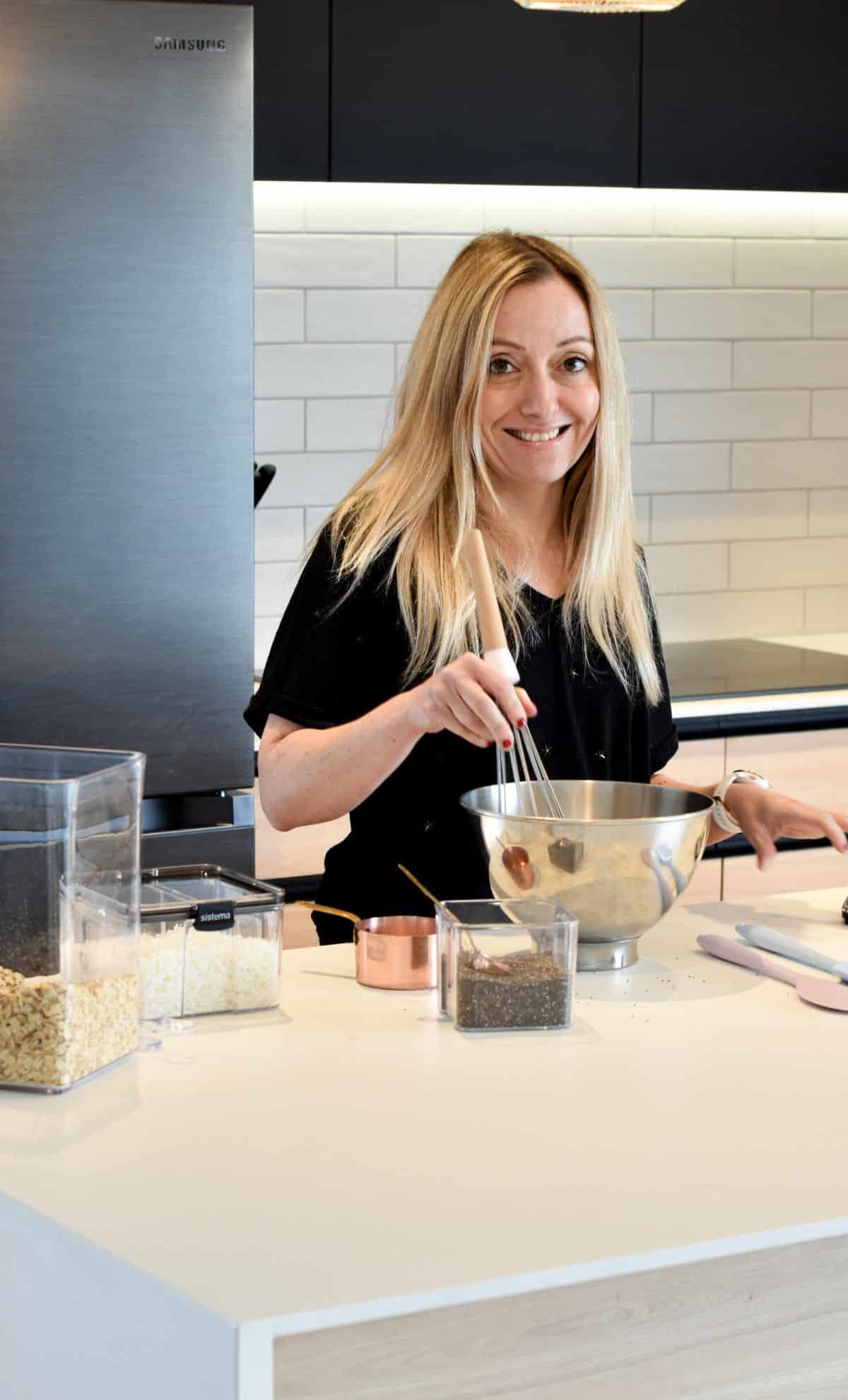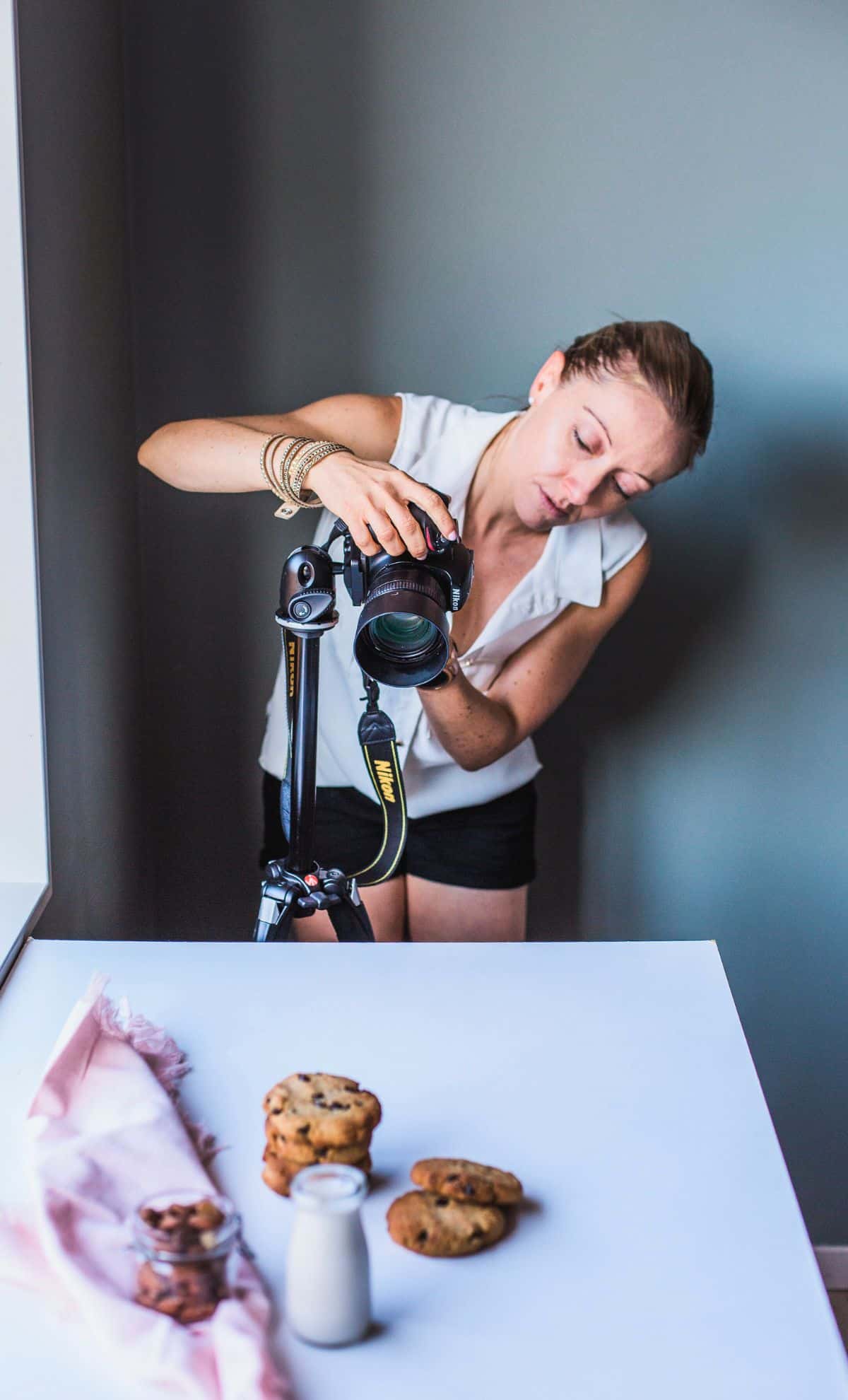We have several hundreds of human-made, human-tested, and human-photographed recipes on The Conscious Plant Kitchen. This is us sharing what we make, what we eat, because we believe in our message: eating more plants from our kitchen to yours.

On this page, we’ll explain our recipe publishing process, how we go from an idea to a recipe on the website, and beyond. If you’d rather want to know who we are, read our about us page!
Recipe Inspiration
I (Carine) choose the recipes I make from three sources of inspiration that all have one thing in common. I only make recipes that are interesting, that we will eat (no waste!), and that I believe I can make better, healthier, and more conscious than what already exists online. There’s no point just making the same recipe that every blog already has!
All our recipes are inspired by:
- Recipes that have a personal significance – The ones I’ve been making for years for my family, like my Vegan Crepes, or recipes I inherited from my mother or grandmother, like my Vegan Beignets, or classic Kiwi recipes, like my Overnight Weetbix.
- Suggestions from readers, like my Spinach Quinoa Tortillas that I created because I had many requests for a gluten-free version of my viral Spinach Tortillas.
- Food Trends that I want to make in a healthier, more conscious way, like my Air Fryer Donut Holes, 3-Ingredient Banana Bread, or Healthy Brownies.
The vast majority of recipes I make and share are from the first category. With our French roots, New Zealand culture, American inspiration, and the fact that Damien is vegan, we have a unique touch, a je-ne-sais-quoi, the famous French flair, that brings something to the table.
I have a Trello board with hundreds of recipe ideas that I compile, but since there’s only one of me cooking (I never outsource recipe development or photography), I choose the ones to make based on the season and the ingredients I have in my fridge.
Recipe Development
Once the ideas have been set for the next week or a couple of weeks, we shop in our local stores for the ingredients. We always prioritize locally produced organic options, so you might see me every week in the Matakana Village Farmer’s Market, grabbing my veggies or fresh fruits.
I normally test each recipe several times. I always make them first for us to try, and the family’s feedback is essential in balancing the flavors, sweetness, baking time, texture, etc.
If the result is not good enough, I’ll try again the following day until I know that the recipe brings something new, something surprising, and is delicious.
At this stage, the recipe is only written on a post-it note, with many scribbles and adjustments. But I know it’s a keeper!
Food Photography
Once I’ve zeroed-in on the recipe and all ingredients and steps are guaranteed to deliver something that works, I make the recipe once more in front of the camera. These shots are what you can see on the website.
I take a picture of my ingredients measured in small bowls, and several pictures of all the important steps. And of course, many shots of the final results. This is my favorite part, I love shooting a recipe to make its deliciousness come through to you. Making something tasty look actually appetizing is what gives me the most satisfaction.
I often shoot several recipes at once – juggling between a cake in the oven, while an overnight oats recipe is setting in the fridge, and a donut hole is baking in the air fryer. This results in 200 to 1,000 pictures taken in one single day.
I use a single camera, with a mixture of natural and artificial lightning, and I have hundreds of props and utensils to decorate my photos.

Publishing
Once I have taken the photographs for a new recipe, I start writing the content on The Conscious Plant Kitchen.
This consist of writing a printable recipe card, but also as many tips as possible to help you make the recipe perfectly. This includes tips for selecting the right ingredients, additional tips for making the recipe with process shots, storage tips, and all the substitutions that I have tested and know will work.
I also try to anticipate questions and prepare answers based on questions that readers have asked before on similar recipes.
Once I’ve done the draft, Damien comes in, proofreads the recipe post, adds all the styling to make the page itself look good, and makes sure it’s discoverable by linking it from related recipes.
The photos we publish are sometimes edited for colors, to make them pop on the screen as much as they pop in real life because a pesky cloud can make a few shots a lot darker than the rest of the series.
Sharing
The work doesn’t stop when the recipe is live on the website. We then schedule it for sharing. Damien and I share the scheduling of our new recipes on Instagram, Facebook, and in our Newsletter.
We also try to include on these media other seasonal recipes that we believe readers will be interested in.
This is also when we decide whether or not to shoot a video for the new recipe. When we do, I make the recipe again while shooting vertically with my camera, so it looks better when shared in Reels, Shorts, and on TikTok.
Making videos in very-short form like this is challenging as you have to cut down 10 to 15 minutes of making something into a 5-second to 10-second clip, but I love doing this!
Feedback
After the recipe is published, we start getting feedback from you, readers. Between active feedback, like comments on socials, comments on the website, emails, or direct messages, and more passive feedback, like reach, likes, and traffic, we try to make sure the new recipe is spot on.
As a result, we often have to adjust a few things, give more details, clarify the recipe, and propose more answers to frequently asked questions to improve on the first edition of the recipe.
We also often revisit years-old recipes and update them, either by taking new, prettier pictures or by rewriting the content to ensure it’s as helpful as possible.
Frequently Asked Questions
Yes, all our recipes are made in our kitchen by us, for us. We eat everything we make because we only do recipes that we like.
100% of our pictures are taken by me, Carine. It’s crucial for us that the recipes you make look like what you can see on the site. So we don’t buy stock pictures, we don’t use AI to generate pictures, it’s all homemade!
Absolutely! If you’d like me to make one of your favorite recipes, drop me an email at carine@theconsciousplantkitchen.com.
We don’t use AI to generate pictures or to write the text for us, it’s all human-made. Some of the tools we use, like Canva, have some AI components that we don’t use.
We create between 2 and 5 new recipes per week.

